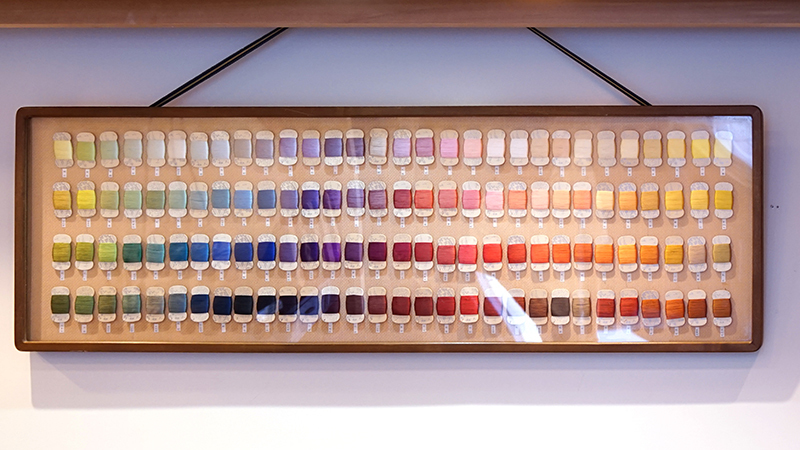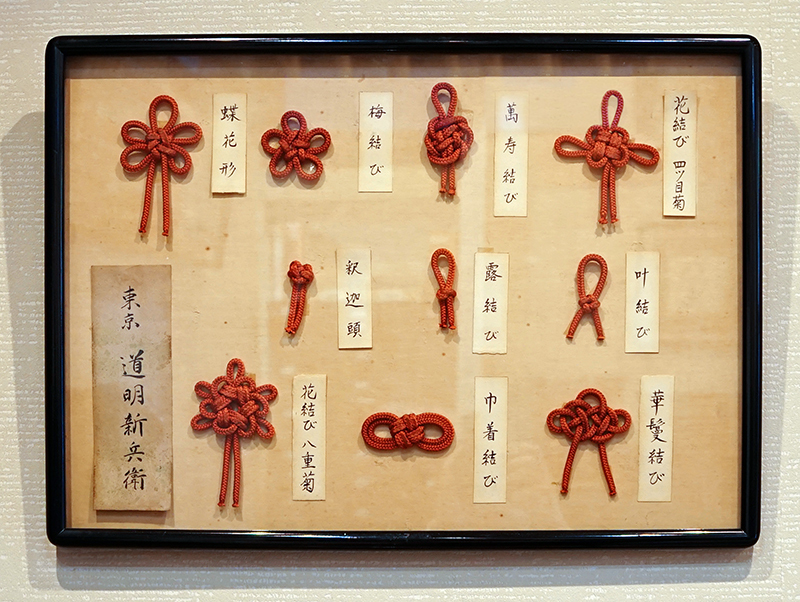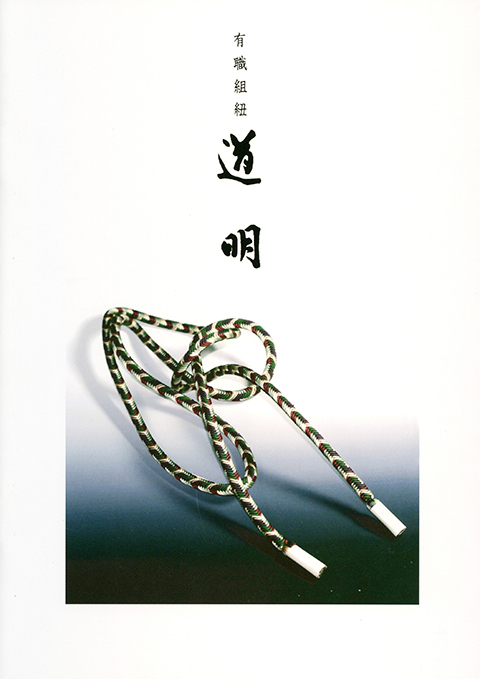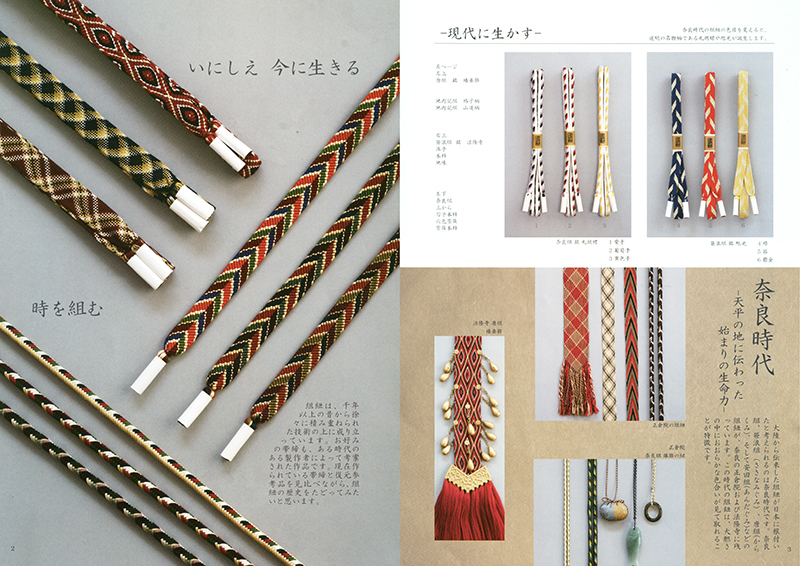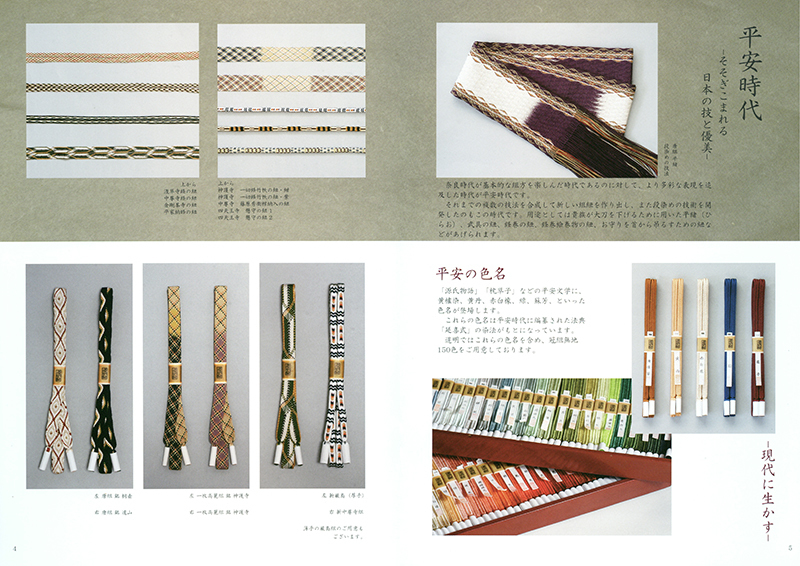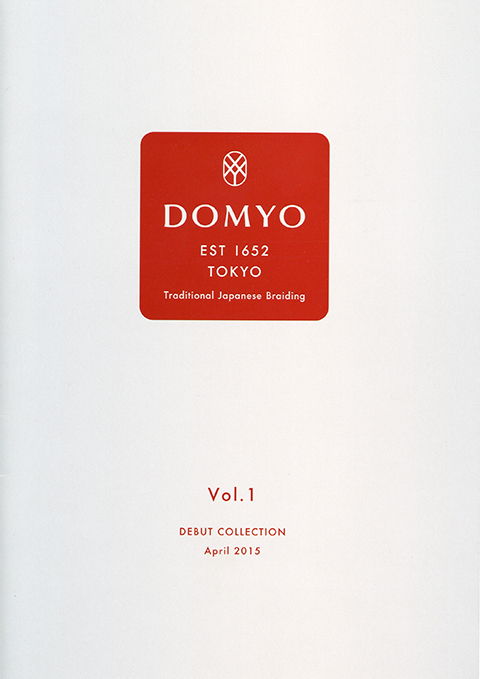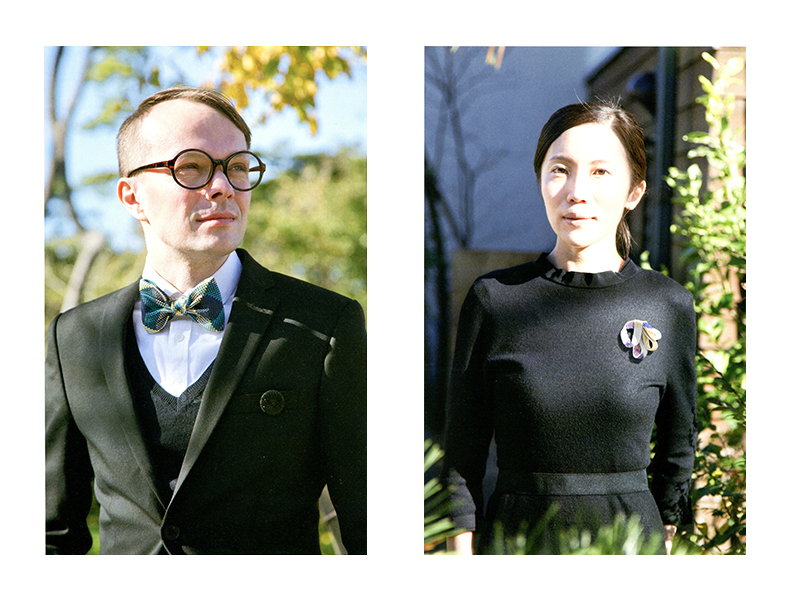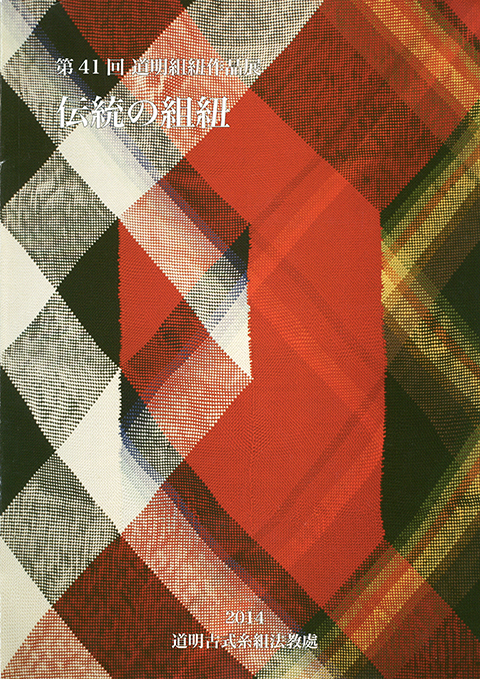Silk threads used as materials for Kumihimo are now imported from abroad because their domestic production has decreased. Also, colors unique to Japan, called "Washoku," or Japanese color, which were made from materials in Japan, have been vanishing as those materials have diminished. In Yusoku Kumihimo Domyo, they have dyed silk threads, and created original colors. They also attempt to use new colors and patterns that are inspired by paintings and others as well as reproducing traditional colors and patterns.
Various threads based on Washoku, which are showcased in the store. About 180 solid Washoku colors are put in the case.

Ornament cords that are braided for Buddhist altar fittings and furnishings


Original colors are produced by hand dyeing in the dyeing studio. For a braiding method called "Ungen" that has a gradation from dark to light colors, about five colors of threads are needed. For a method called "Obokashi," colors are shaded off during the dyeing process, and dark threads are added to base threads.

In the studio, threads and cords that have been used before are stored as reference materials.

Many materials that have been reproduced after surveying a variety of Kumihimo and patterns both at home and abroad are also stored. These materials help create new products and expressions.


A variety of reproduced Kumihimo and patterns in various regions

Reproduced Kumihimo stored in Shoso-in

Reproduced Kumihimo from the Andes



Domyo has researched the tradition and history of Kumihimo from the Nara Period, in which it was introduced from China, rooted and spread in Japan, to the Heian, Kamakura, Muromachi and Edo Periods, and created products that are reproductions of Kumihimo in those periods.



Kumihimo used for the cover is a tapestry that was inspired by Gauguin's paintings.

Domyo has researched the tradition and history of Kumihimo from the Nara Period, in which it was introduced from China, rooted and spread in Japan, to the Heian, Kamakura, Muromachi and Edo Periods, and created products that are reproductions of Kumihimo in those periods.
Kumihimo used for the cover is a tapestry that was inspired by Gauguin's paintings.
















